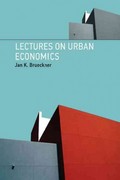Question
Case Study Mr. Andrew Donald lives in the Ringwood which is located in the northeast side of the city and has to drive to his
Case Study
Mr. Andrew Donald lives in the Ringwood which is located in the northeast side of the city and has to drive to his workplace in Altona which is located in the Southwestern side of the city. There is a highway that connects these two regions, which is the fastest route between these two regions. Other substitute roads may have longer trip times as they pass through the central business district. There is usually heavy traffic and congestion on the highway and Mr Donald has to spend an extra 40 minutes in congestion every day, 40 precious minutes that he could spend with his family rather than waiting in traffic. He usually has to leave home early to get to work on time. But sometimes like today an accident makes the congestion worse. He may miss an important meeting at 9:00 am. Recently, the government has announced that it is considering building a new highway to transfer some of the congestion to the second road. However, this plan has been opposed by environmental groups. They believe that building a new road would affect the wildlife of the city, makes more noise and air pollution and would not solve the congestion problem in long term. Some opponents advocate the use of congestion charge. Under this system, drivers who use the highway during peak hours have to pay a price. Their argument is that by applying road pricing, some of the drivers would be encouraged to use the other roads, or even public transport. This will decrease the congestion on the highway.
Task 1: (10 Marks)
The concept of road pricing is introduced by Arthur. C. Pigou in 1920. However, it took a long time until it was applied in a city. Briefly described the three types of road pricing: (a) Pigovian tax for externalities, (b) pricing of public roads or user-pay principles, and (c) road toll for private financing. Do literature review on Pigouvian tax and congestion pricing. Summarise the application of congestion pricing around the world (how, when, what, why, etc), its pros and cons (technical, economic, and social), and the outcomes (congestion reduction, welfare impacts, etc).
Some useful references on how to do literature review: https://www.citewrite.qut.edu.au/write/litreview.jsp https://emedia.rmit.edu.au/learninglab/content/literature-review-overview There are many articles published in scientific journals and academic textbooks on congestion pricing. You need to find a selection of articles and summarise them. If you simply do search in google scholar using "congestion pricing", you will find many articles. Do not rely on unreliable sources from the internet. Use only textbooks, lecture notes from universities, articles in academic journals, and government reports. You need to find a few more updated articles.
Step by Step Solution
There are 3 Steps involved in it
Step: 1

Get Instant Access to Expert-Tailored Solutions
See step-by-step solutions with expert insights and AI powered tools for academic success
Step: 2

Step: 3

Ace Your Homework with AI
Get the answers you need in no time with our AI-driven, step-by-step assistance
Get Started


